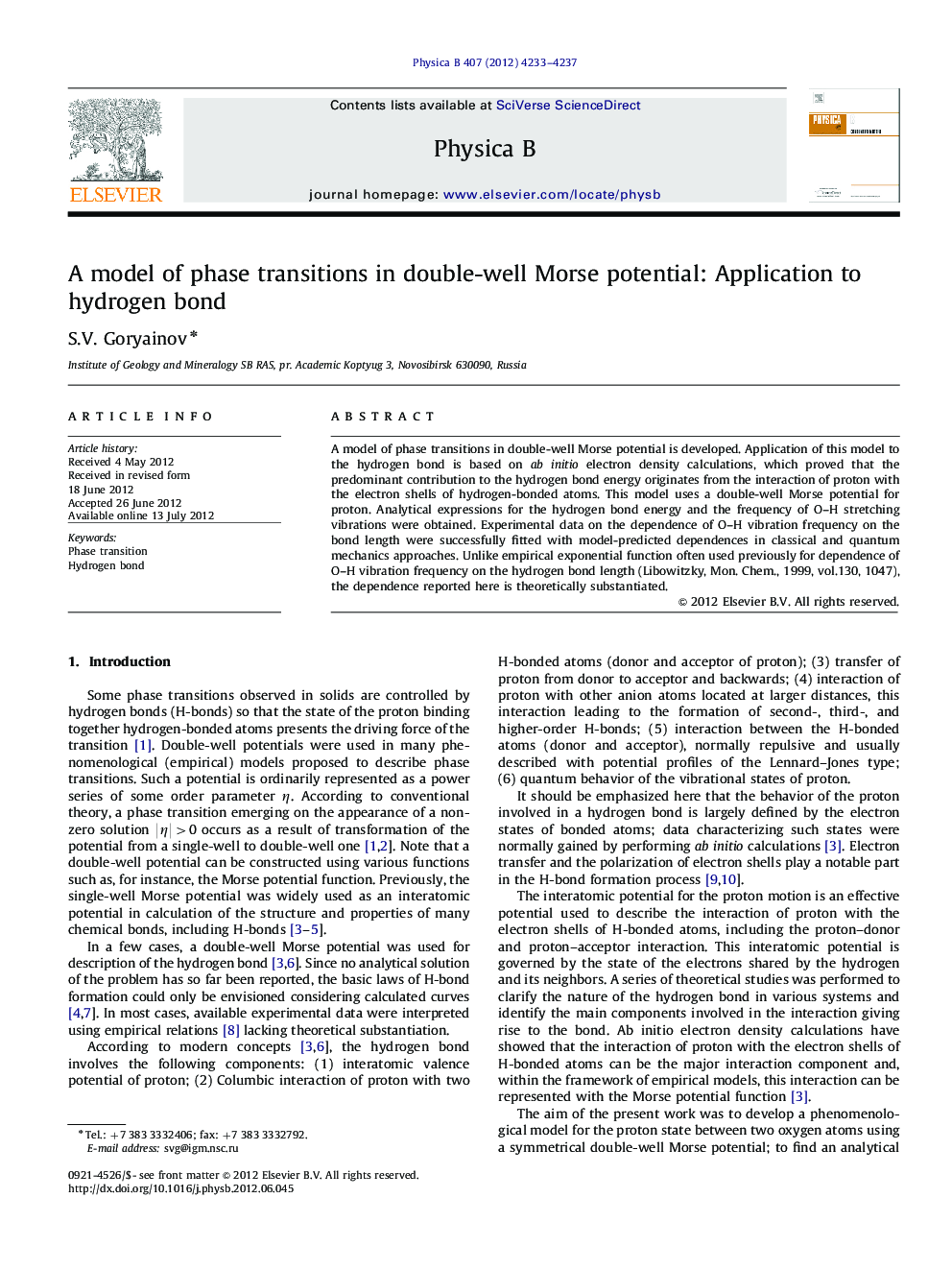| کد مقاله | کد نشریه | سال انتشار | مقاله انگلیسی | نسخه تمام متن |
|---|---|---|---|---|
| 1810540 | 1025565 | 2012 | 5 صفحه PDF | دانلود رایگان |

A model of phase transitions in double-well Morse potential is developed. Application of this model to the hydrogen bond is based on ab initio electron density calculations, which proved that the predominant contribution to the hydrogen bond energy originates from the interaction of proton with the electron shells of hydrogen-bonded atoms. This model uses a double-well Morse potential for proton. Analytical expressions for the hydrogen bond energy and the frequency of O–H stretching vibrations were obtained. Experimental data on the dependence of O–H vibration frequency on the bond length were successfully fitted with model-predicted dependences in classical and quantum mechanics approaches. Unlike empirical exponential function often used previously for dependence of O–H vibration frequency on the hydrogen bond length (Libowitzky, Mon. Chem., 1999, vol.130, 1047), the dependence reported here is theoretically substantiated.
Journal: Physica B: Condensed Matter - Volume 407, Issue 21, 1 November 2012, Pages 4233–4237